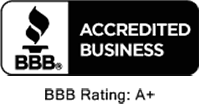Raccoon Removal and Control MN
Raccoons are one of the most common nuisance animals in the United States. If you have been hearing scratching sounds in your attic, walls, chimney, or crawlspace chances are it’s a raccoon.
Raccoons may gain entry to your attic, crawlspace, walls, and raccoons in the chimney of your home or business.
Once these nuisance animals gain entry to your home or business they can cause significant damage. Female raccoons look for places to have their young, and attics and chimneys are VERY good accessible locations that appeal to these unwanted critters.
The Raccoon is one of United States most commonly seen nocturnal creatures. These animals are seen mostly at night and usually the raccoon can be seen along the road ways, in cities and towns. These animals are very cute to look at, and watch, however it can be one of America’s most destructive wildlife creatures.
Raccoons are very aggressive animals that can carry and transmit rabies. It is estimated that in the United States, approximately 900 million dollars worth of home owners insurance claims are filed each year because of destruction caused by raccoons. One of the main calls wild animal control experts receive is for raccoon removal. These professionals specialize in raccoon removal and control from the attic area of a house.
Raccoon Removal can be quite a troublesome job because attics are usually tight, low lighted areas that do not provide a lot of working room. Wild Animal removal experts can humanely trap and remove these nuisance animals. Once the raccoon has been trapped repairs can be made to seal the hole or point of entry to prevent wildlife reentry.
If the hole or point of entry is not sealed properly, this job can be disastrous. An inexperienced person can fall through the ceiling, get bit by the raccoon, tear up your wiring or AC duct work. Raccoon removal and control is a job for a professional. Also the feces may carry parasites that can be transferred to humans and pets, sanitation is a must!
Exclusion
Exclusion is the key to eliminating den sites, but remember that raccoons are powerful animals and can become vicious when cornered. Their front paws are handlike, with toes that are long, flexible, and considerably dexterous. Raccoons are known to unhook simple latches.
To Animal-Proof Your Home We Suggest You Consider the Following Areas.
There are several key areas that must be taken into consideration in a comprehensive Animal proofing plan.
Roof Vents
Constructed of light weight aluminum or plastic, they are no obstacle for animals seeking entry into attics.
Chimneys
If not screened properly, they make suitable living quarters for raccoons and squirrels. Birds often fall into open chimneys and become stuck at the bottom. Sometimes these animals even enter the “living space” of the home.
Plumbing Vent Pipes
If left unprotected, they are an invitation to animals seeking den sites inside of the house. Once inside the pipe, wildlife often become stuck and obstruct the normal function of the buildings plumbing system.
Stove & Bathroom Exhaust Vents
If unsecured, they make ideal nesting sites for birds and sometimes squirrels. This results in noticeable sounds, odors and insects.
Roof and Fascia Spaces
If not properly constructed or due to deterioration, they offer an opportunity for wildlife to chew on the free edge of the wood and gain entry into the attic.
Roof – Soffit Intersection
If left unscreened, they can be easily manipulated by an animal from the outside in order to establish a den site inside the attic space.

Figure 1. The house and yard can provide homes for wild animals in the form of shelter and cover. An overhanging branch (a) can provide access to a roof, while the tree itself may be used as a refuge. An uncapped chimney (b) or broken vent (c) can provide access to warm, dry living quarters. Entry for small mammals can occur where wiring or pipes enter the house (d) and (e), vents are uncapped (f), doors are improperly fitted (g), ground-level window sills, foundations (h) and bulkhead doors (i) have gaps. Shelter can be found under decks (j); burrowing animals may tunnel beneath patios (k) or wood piles (l). (Adapted from Hodge, Wild Neighbors: The Humane Approach to Living with Wildlife.)
Please consult a Minnesota Wild Animal Control Expert for a permanent humane solution to your wildlife problem. A Professional will have the knowledge, skills, and equipment to get rid of raccoons and repair the damage to ensure they do not return.




